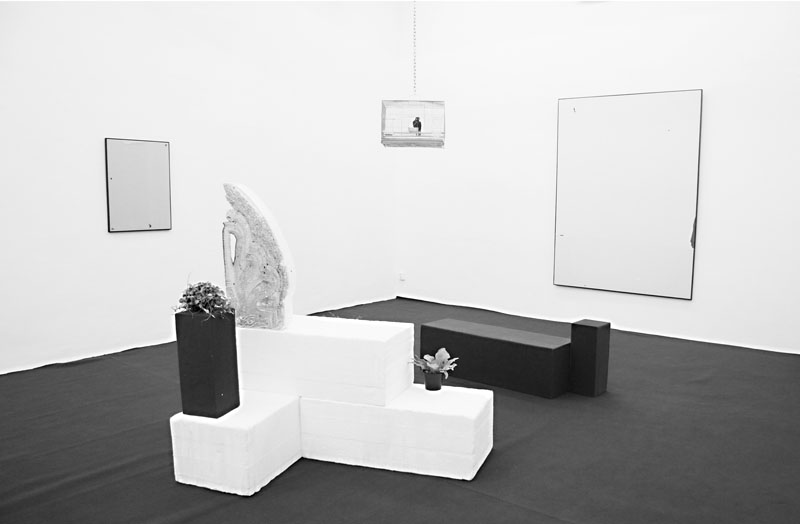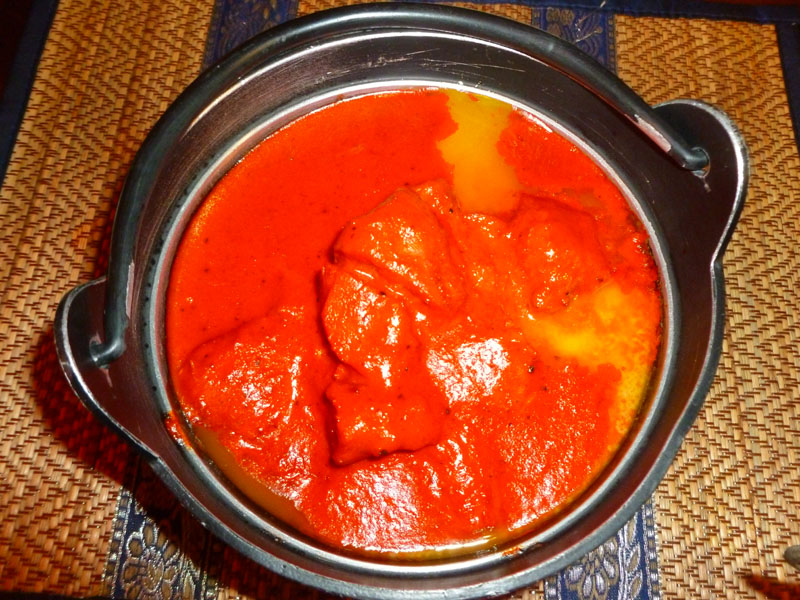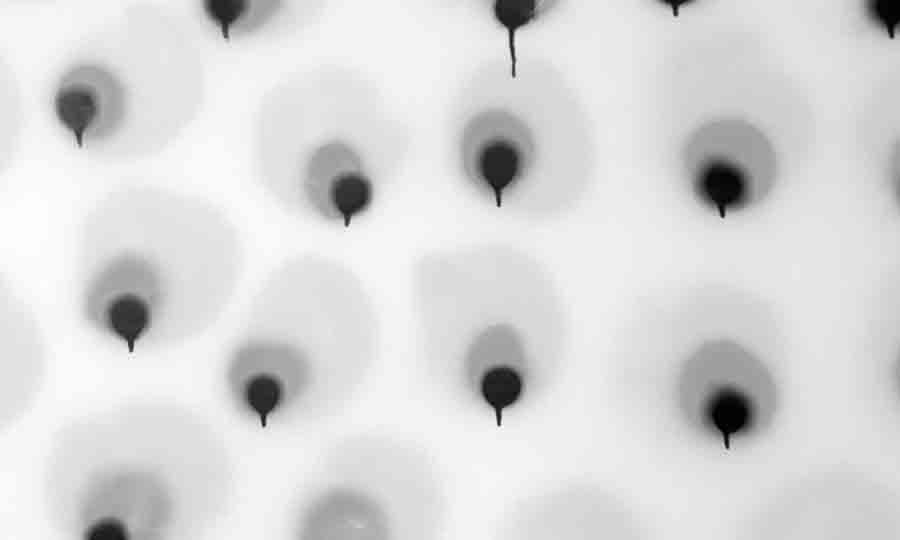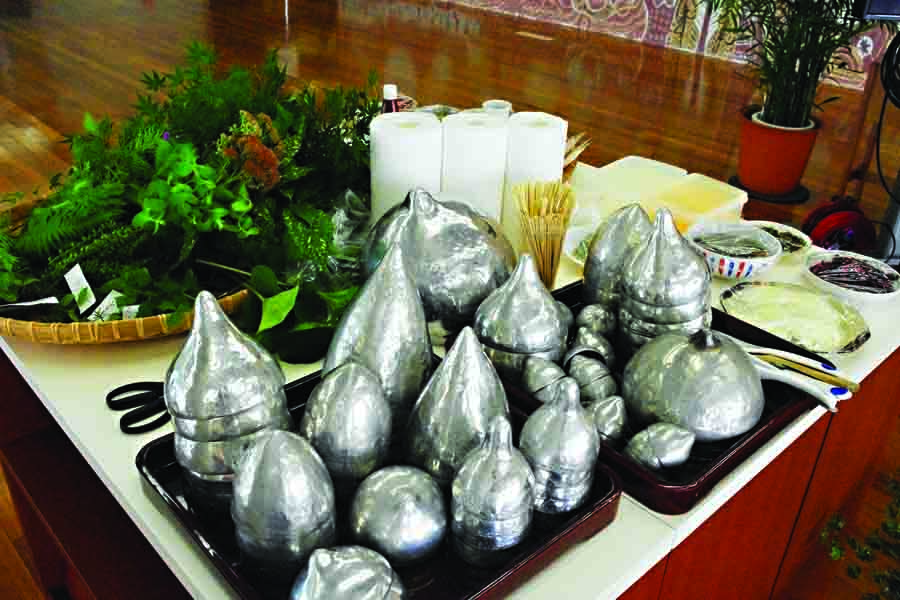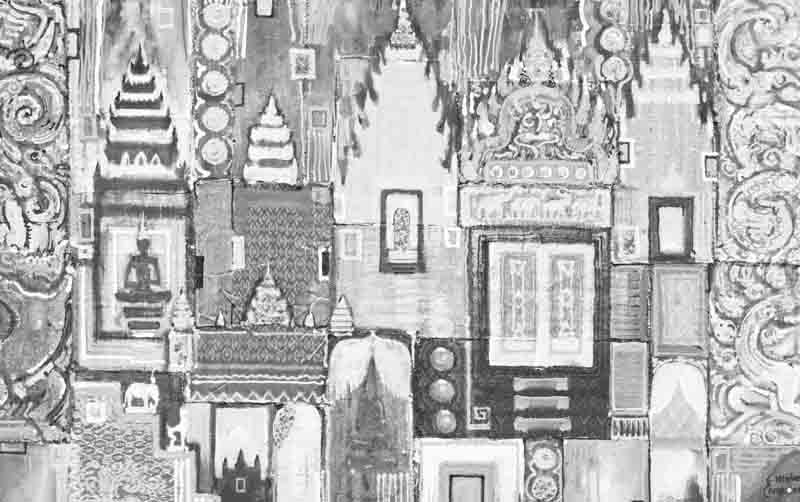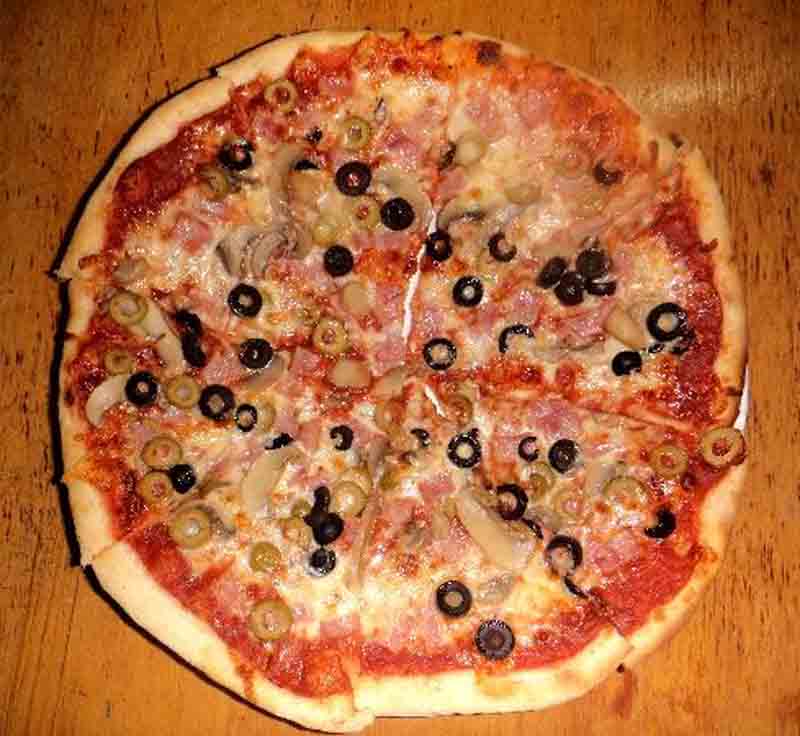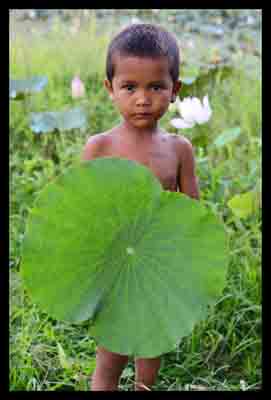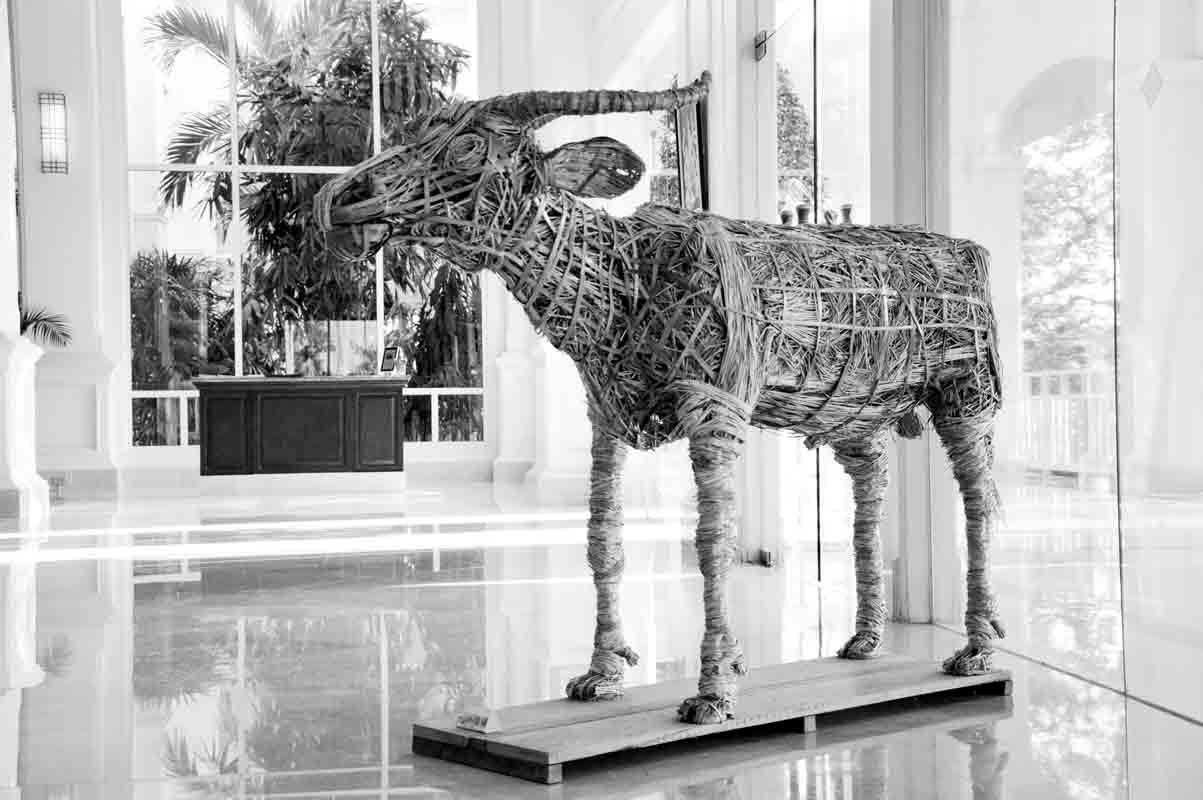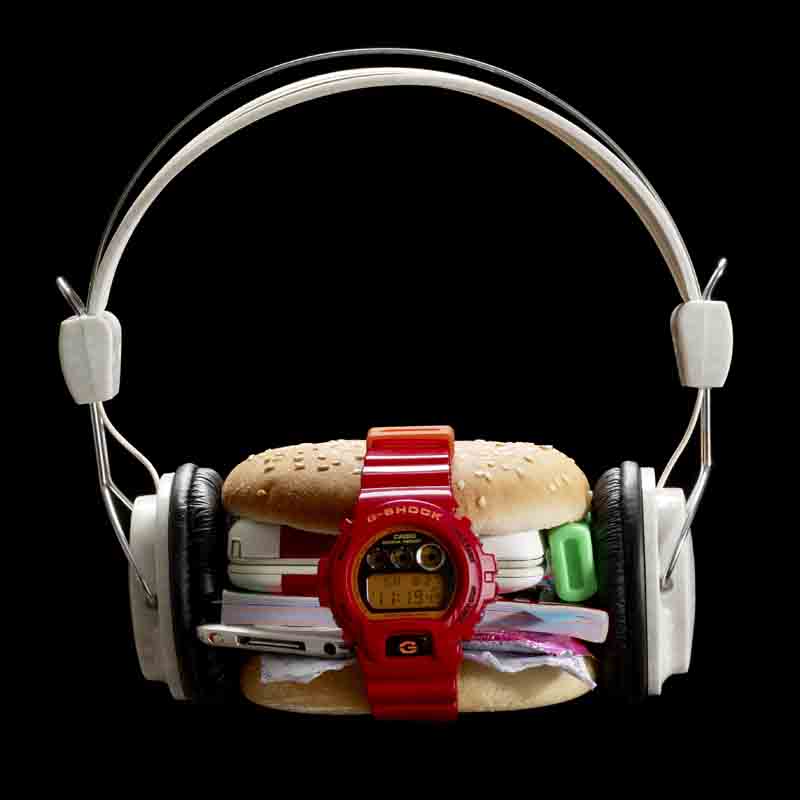There is a place, in the Mexican town of Xilitla, where a man – English surrealist Edward James – gave birth to his irrational architectural dream. This impossible city lies hidden in the forest, with mysterious towers, unfinished stairways, gigantic concrete flowers, waterfalls, gothic arches and other grotesque elements. Here, in this exquisitely sculptured Garden of Eden known as Las Pozas (‘The Pools’), the organic and artificial blend; Edawrd James’ subconscious becomes tangible, and visitors find themselves wandering among the exquisite ruins of a long-lost culture.
Khmer-American artist Albert Samreth has created his own Xilitla, an exhibition running at Sa Sa Bassac until November 29. Atop a blue carpet, reminiscent of a water garden, are everything from interactive sculptures to a Khmer-speaking bird who might remark on how gorgeous you look as you pass, from ancient ruins to vast canvas curtains exploring the remains of Angkor and its mighty sunsets.
“I was fascinated by the unfinished monumental project of Las Pozas,” says the artist. “Incompleteness is the closest thing to immortality. It’s an ongoing process. James’ paradise reminded me of Angkor, another abandoned incomplete city.”
The cities of Xilitla and Phnom Penh have more in common than you might think, notes curator Erin Gleeson. “Xilitla and Phnom Penh are just 10 degrees apart from the equator. Xilitla and Angkor are both ruins in the forest. With every gesture in the gallery, the artist is talking to Xilitla, to Angkor, to Phnom Penh, making them communicate with each other. The project is also about time and change, translated in a very elegant way. In the commercial paintings bought, cut up and gathered by Albert in his collage, you have the representation of the representation which also relates to painting history in Cambodia. Albert is probably the first artist who has interrogated Angkor like that, suggesting a question: are these the ruins on our consciousness?”
Point out the vast blocks made of Styrofoam scattered around the gallery and the artist explains he’s going to write the dates of visitors’ first kisses on them. His rationale? These blocks might survive the passage of time, much like the Rosetta Stone, and when people discover them they will wonder about the meaning of those numbers.
Similarly, the exhibition’s talking common hill myna bird will be an unusual ambassador. Says Albert: “There is this idea that even if society ends, there will be this bird who can speak languages and let the history of humanity continue, a bit like these ruins from the past that we still visit today.”
And what would our English surrealist, creator of the original Xilitla gardens, make of it all? “‘Surrealistic’ is a state of mind,” says Erin. “It involves being able to connect things that normally don’t connect. You cannot rationalise in that room. In this sense the exhibition can be considered as surrealistic, but this is just one of the multiple connections.”
WHO: Albert Samreth
WHAT: Xilitla art exhibition
WHERE: Sa Sa Bassac, #18 Sothearos Blvd (2nd floor)
WHEN: Until November 29
WHY: “I believe in the power of the imagination to remake the world, to release the truth within us, to hold back the night, to transcend death, to charm motorways, to ingratiate ourselves with birds, to enlist the confidences of madmen.” – JG Ballard
